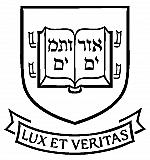“The great plan of Jesus Christ”

[ABOVE—1970 Revival at Asbury University—Photograph courtesy of Asbury University Archives]
It started with a disturbance of the peace. In a dorm room at Hampden-Sydney College, four young men prayed together. But this was no ordinary prayer. It was 1787, four years after the Revolutionary War, and these students were experiencing a revolution of their own.
A deep new experience of God had driven them to seek him, which they did together regularly in the woods beyond campus. That day a rainstorm had forced them inside, but the weather did not dampen their fervency. In fact the noise of their prayers grew so distracting that the president of the college himself, John Blair Smith (1756–1799), called a school assembly in response!
When Smith discovered the source of the controversy, however, he invited the new converts to pray in his parlor. Soon the parlor was too small to hold everyone who wanted to join, and the wave of revival that became the Second Great Awakening swept beyond Virginia and washed over the nation.
Stories of revival, renewal, and the spread of mission movements often seem to start in this way: with a small group of college students, praying for God to act on their campuses. College is often a time when students are exposed to new ideas, trying to find their place in the world and set a path for their lives. Spiritual renewal on campus has frequently helped them find that path—and forge a path for others.
For example, a thunderstorm at Williams College in 1806 drove a meeting of missions-minded students to take cover under a haystack. That meeting was crucial in the founding of the American Board of Commissioners for Foreign Missions.
Eighty years later an impromptu college-student-led evening prayer service at a D. L. Moody revival at his college prep school, Mount Hermon, brought the Student Volunteer Movement into being and launched the career of John R. Mott (1865–1955), one of the greatest ecumenical and missionary advocates of the twentieth century. In a 1905 revival at Yale, undergraduate Kenneth Scott Latourette (1884–1968) rose to leadership, eventually becoming a renowned missionary and church historian. Testimonies in 1970 at a revival at Asbury College helped spread a “Jesus movement” to churches and schools around the country.
Praying through the night
Hundreds of other revivals great and small across the United States involved students and college campuses. Nor did these revivals only occur in explicitly Christian settings. By all accounts Yale was going through a period of “infidelity and immorality,” as an early twentieth-century historian put it, just before a revival swept the campus in 1802.
At the Mount Hermon revival that launched the Student Volunteer Movement, the preaching of Moody—though inspiring—was not the turning point. Instead, the renewal fervor arose from the actions of Robert Wilder (1863–1938), who gathered a few other students in the afternoon to pray for missions and sign a pledge:
We, the undersigned, declare ourselves willing and desirous, God permitting, to go to the unevangelized portions of the world.
A few became 10, then 20; soon those who had signed the pledge were speaking of it to other students everywhere, and Wilder—already an experienced missions speaker—convinced Moody to include a missions talk on the revival program.
Years later, Mott, deeply changed by that missions talk, wrote in a memoir:
We went out of that meeting not discussing the speeches. Everybody was quiet. We scattered among the groves. . . . I know many men who prayed on into the late watches of the night. The grove back there on the ridge was the scene that night of battles. Men surrendered themselves to the great plan of Jesus Christ [for] this whole world and . . . His Kingdom.
More often than not, the great plan of Jesus Christ has started on a college campus.
—Jennifer Woodruff Tait, managing editor, Christian History
By Jennifer Woodruff Tait
[Christian History originally published this article in Christian History Issue #139 in 2021]
Jennifer Woodruff Tait, managing editor, Christian HistoryNext articles
Seeking and teaching virtue
Christian bearers of the liberal arts tradition from the Middle Ages to the present
Jennifer A. BoardmanHumility, truth, mentoring, love
Is something missing from the modern university?
the editors and intervieweesHallowed halls: Recommended resources CH 139
Learn more about Christianity and higher education with these resources selected by Christian History’s authors and editors.
the editors and contributorsSupport us
Christian History Institute (CHI) is a non-profit Pennsylvania corporation founded in 1982. Your donations support the continuation of this ministry
Donate







